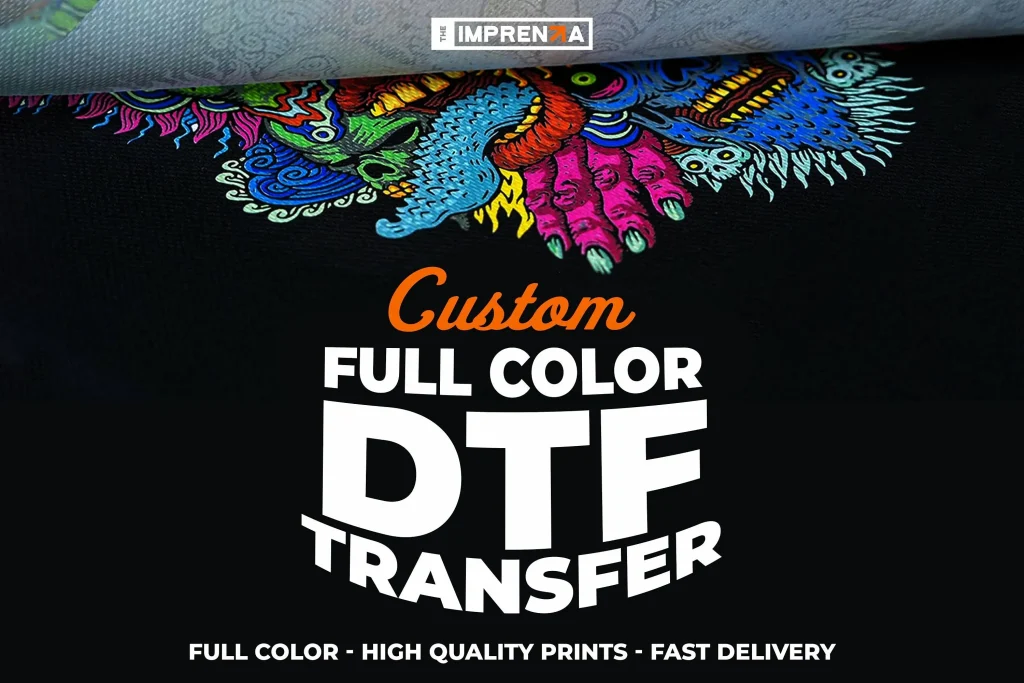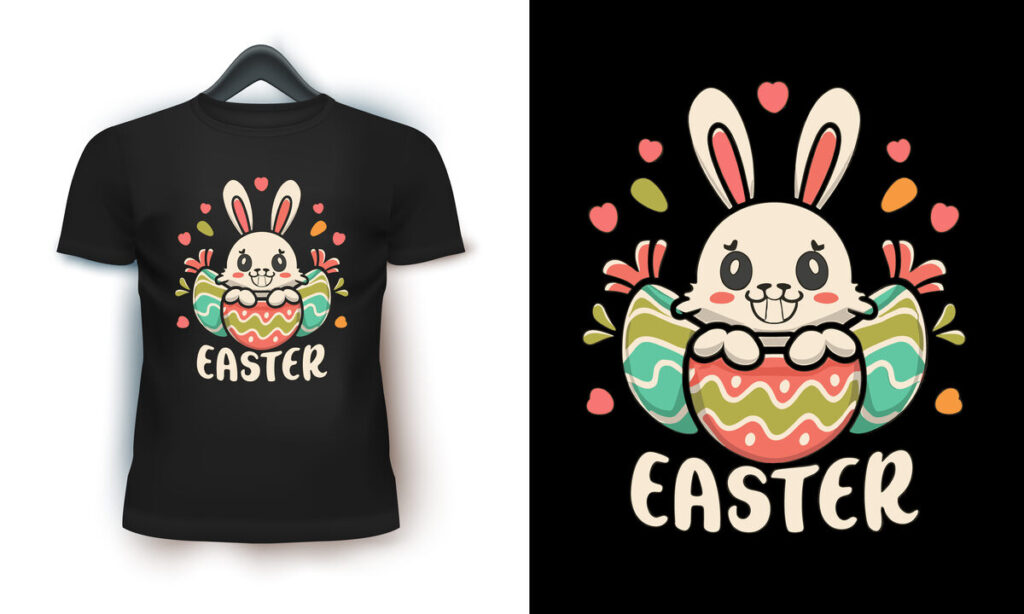DTF transfers, or Direct-to-Film transfers, have quickly become a pivotal innovation in the custom print landscape. Renowned for their vibrant colors and long-lasting durability, these innovative prints are the preferred method for businesses eager to deliver high-quality, customized products. In this guide, we will delve into best practices for DTF printing, highlighting essential techniques and insights that can elevate your printing game. Whether you’re a seasoned artisan or a new entrant in the industry, mastering the DTF transfer process can facilitate stunning results that captivate your audience. Additionally, we’ll touch on sustainable practices in DTF printing, showcasing eco-friendly options that appeal to increasingly conscientious consumers.
Known for their remarkable ability to reproduce intricate designs, DTF transfers—also referred to as film prints—are creating a buzz in the world of custom apparel. This technique allows for a dynamic range of colors to be transferred onto fabric, making it an ideal choice for artists and businesses seeking to produce eye-catching custom prints. The DTF printing process not only ensures longevity but also offers versatility across various fabric types, cementing its status in the print industry. With an emphasize on finding the right materials and following best practices for DTF, creators can unlock the full potential of their designs while also catering to the growing demand for eco-friendly printing solutions. Exploring the latest trends and tools in film transfer technology is essential for anyone looking to stay ahead in this competitive market.
Understanding the DTF Transfer Process
The DTF transfer process is a multi-step method that allows for high-quality designs to be printed directly onto fabrics. It begins with printing the desired design onto a special film, which is coated with an innovative adhesive layer. This unique coating is crucial as it helps the design adhere firmly to fabric, ensuring longevity and vibrant color representation. Following the printing phase, adhesive powder is sprinkled onto the design; this powder is then cured through heat to create a strong bond between the ink and the film.
Once the film is prepared, the real magic happens when it’s placed on the fabric using a heat press. This stage is essential because it melds the print onto the fabric securely. The result is a brilliant, full-color image that can withstand multiple washes without fading. By understanding this detailed transfer process, businesses can produce garments and promotional items that stand out in today’s competitive market.
Best Practices for Optimizing DTF Transfers
To achieve the best results with DTF transfers, following established best practices is essential. One of the most significant aspects is selecting high-quality film that offers not only vibrant color representation but also durability. It’s recommended that studios use films endowed with good adhesive properties and a thickness range between 75 to 130 microns. This selection ensures that the transfer process runs smoothly and produces prints that are capable of enduring everyday wear and tear.
Additionally, using the proper ink formulation for DTF printing is crucial. Specialized DTF inks that are water-based or specifically designed for this process provide enhanced adhesion and color vibrancy. These inks allow for superior smoothness in application and ensure that the final product retains its colors even after numerous washes. By optimizing these elements, businesses can consistently deliver high-quality products that meet customer expectations.
The Importance of Proper Printer Settings
Printer settings play a vital role in achieving stunning DTF transfers. Each printer comes with its own set of customizable features, and understanding how to adjust these settings is key to ensuring high-quality output. For instance, setting the resolution between 300-720 DPI can significantly affect the sharpness of the image. A higher resolution generally means crisper images, which is essential for intricate designs that are characteristic of DTF printing.
Speed settings also need careful calibration based on the materials being used for printing. Different fabrics may require varying speeds to ensure that the ink adheres adequately without smudging or running. Additionally, temperature settings for the adhesive powder must be precisely maintained to optimize melting and application. By taking the time to fine-tune these settings, businesses can produce breathtaking prints that resonate with their clientele.
Curing and Cooling Techniques for Quality Assurance
After the transfer has been completed, the curing and cooling process is critical for ensuring quality in DTF printing. It is vital to allow the printed fabric to cool completely before peeling off the film. This cooling phase solidifies the adherence of the print to the fabric, enhancing the vibrancy and longevity of the design. Cooling too quickly or prematurely removing the film can lead to unsatisfactory prints that do not hold up after washing.
Investigating the correct time and conditions for curing can further improve overall print quality. It is often recommended to allow the fabric to sit for a few minutes post-pressing before handling. A thorough understanding of the curing process ensures that every design maintains its integrity, allowing businesses to stand by their products confidently and satisfy their customers.
Eco-Friendly Options in DTF Printing
As the demand for sustainable printing options continues to surge, eco-friendly DTF practices are quickly gaining traction within the industry. Businesses are increasingly opting for recyclable films and eco-conscious inks that reduce environmental impact. These sustainable practices not only cater to a market increasingly driven by eco-awareness but also allow companies to distinguish themselves in a competitive landscape. By integrating these practices, businesses can appeal to environmentally-conscious consumers without compromising on quality.
Moreover, employing eco-friendly DTF methods can also contribute to reducing waste. Businesses adopting sustainable processes often find that they can optimize their material usage and minimize byproducts from the printing process. This lessens the overall ecological footprint and aligns companies with the growing demand for transparency and responsibility amongst consumers, fostering a deeper brand loyalty.
Trends Shaping the Future of DTF Printing
The DTF printing industry is evolving rapidly, driven by emerging trends that prioritize innovation in product offerings. Notably, the demand for durable and customizable prints has increased, with businesses now seeking unique designs that appeal to diverse customer preferences. This evolution means that companies must stay adaptable and embrace the latest techniques and technologies in DTF printing to remain competitive and relevant.
In addition, staying attuned to customer preferences for personalization presents great opportunities for businesses. Many consumers are enamored with tailored designs, propelling companies to offer more diversified options that can cater to individual tastes. By capitalizing on these trends, businesses can not only boost their market presence but also lay the groundwork for a loyal customer base eager for unique products.
Frequently Asked Questions
What is the DTF transfer process and how does it work?
The DTF transfer process involves printing a design onto a special film, applying adhesive powder, curing the ink with heat, and then using a heat press to transfer the design onto fabric. This method is ideal for creating vibrant, long-lasting custom prints on various materials.
What are the best practices for achieving high-quality DTF transfers?
To ensure stunning DTF transfers, focus on selecting high-quality film, using compatible inks, optimizing printer settings, properly heating fabrics, allowing for adequate curing and cooling, and instructing customers on post-application care to maintain print integrity.
What makes DTF printing eco-friendly compared to other methods?
Eco-friendly DTF printing focuses on using recyclable films and water-based inks, reducing environmental impact. Businesses adopting these sustainable practices can appeal to a growing customer base that prioritizes environmentally conscious products.
How can I ensure my DTF transfers remain vibrant and durable over time?
To maintain the vibrancy and durability of DTF transfers, use high-quality materials, follow proper curing and cooling techniques, and educate customers on appropriate washing methods, such as washing inside out and tumble drying on low.
What printer settings are essential for optimal DTF printing results?
Key printer settings for DTF transfers include a resolution of 300-720 DPI, adjusting speed for material compatibility, and setting the correct temperature for melting transfer powder. Optimizing these factors can significantly improve the quality of your prints.
What recent trends are influencing the DTF printing industry?
Recent trends in DTF printing include increased market demand for custom prints, a shift towards eco-friendly solutions, advancements in printing technology, and a growing focus on consumer customization preferences, all shaping the future of the industry.
| Key Points | Details |
|---|---|
| Introduction to DTF Transfers | DTF printing offers vibrant colors and durability, making it popular for high-quality custom products. |
| What Are DTF Transfers? | DTF transfers involve printing designs on a special film and transferring them onto fabric using heat. |
| Best Practices for DTF Transfers | Key areas to focus on include film quality, ink compatibility, printer settings, heating processes, curing, and post-application care. |
| Market Growth | The DTF printing market is growing due to increased demand for custom, durable prints, especially in apparel. |
| Sustainability Practices | Businesses are shifting towards eco-friendly materials, appealing to consumers’ preferences for sustainable products. |
| Technological Advancements | Improvements in printer technology enhance quality and speed, impacting production positively. |
| Customer Preferences | Customization is crucial, as consumers seek personalized designs that maintain high quality. |
Summary
DTF Transfers have emerged as a transformative force in the custom printing industry, allowing for exquisite, high-quality designs that resonate with consumers. As businesses navigate the dynamic landscape of DTF printing, implementing best practices not only guarantees stunning results but also ensures that companies remain competitive amid evolving trends. From choosing the right materials to understanding market growth and sustainability initiatives, businesses that adapt their strategies will flourish. The ongoing innovations in DTF technology and the growing consumer demand for customization further highlight the immense potential this medium holds, making it an essential focus area for anyone involved in the custom print space.



